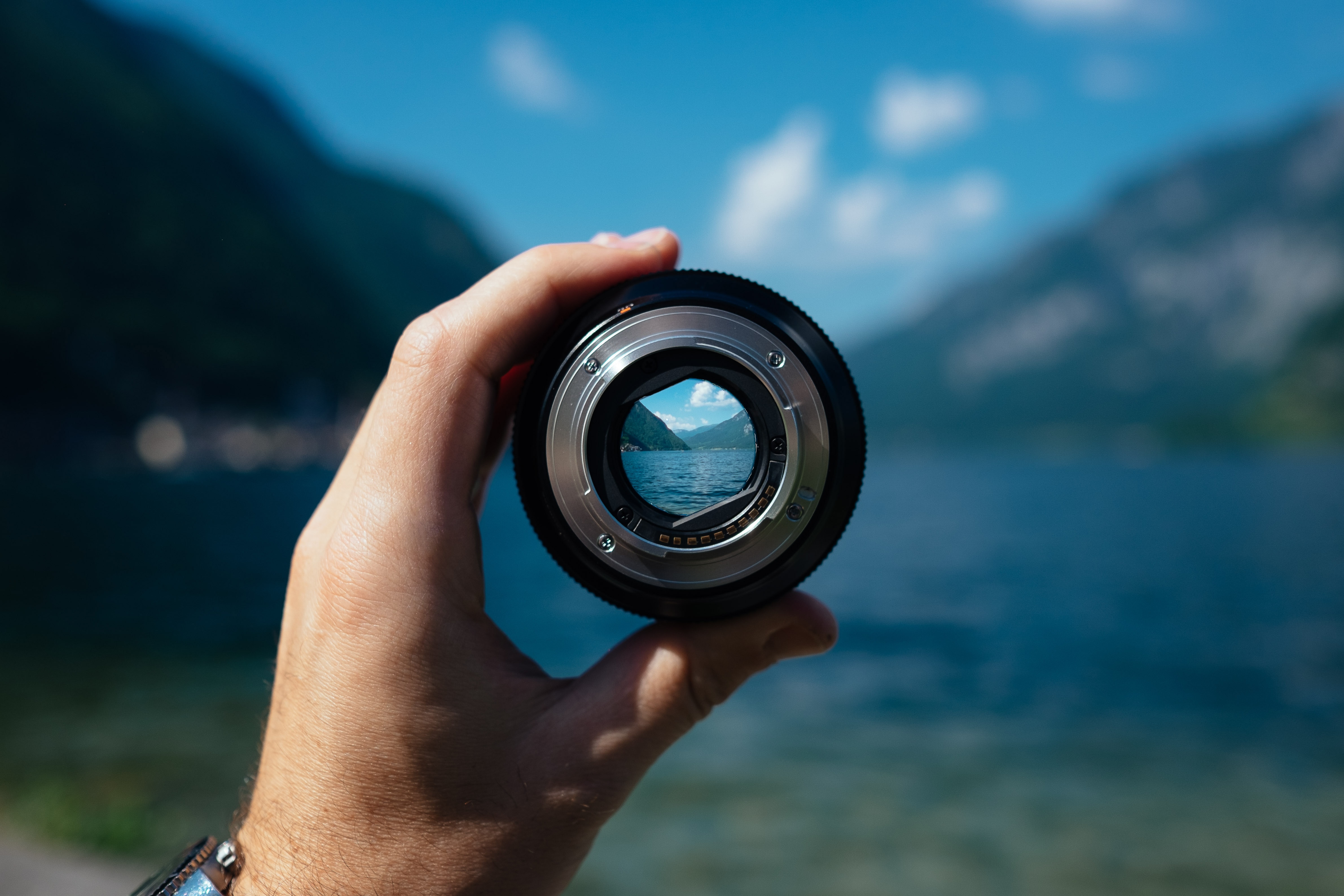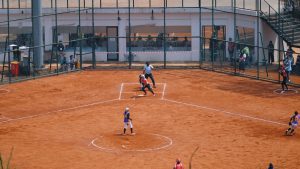
A successful marketing video answers three briefs: Why should someone watch your video? How do you ensure they keep watching? And what will they do next?
To achieve these goals, your marketing video needs to communicate three things. Firstly: authority. This will be the reason people make time for, or seek out your video in the first place. Secondly: pacing and energy. If your video isn’t engaging, people will stop watching it. Thirdly: resonance. You want people to relate to your video, so that they go on to use your product or service. By choosing the right shots for your video, you can greatly enhance the affect it has on your audience.
Every camera shot can be broken down into four simple components:
- Movement (how the camera moves)
- Framing (what is included in the shot),
- Angle (position of the camera in relation to the subject) and
- Focal length (how much of the image is sharp and discernible).
Each of these has a different impact and it can be a lot to remember! But by using stock footage and B-roll to perfect your marketing video, a lot of the legwork has been done for you; all you have to do is choose the stock clips that work best for you. And to help you out, we’ve put together a handy little guide of shot-types you should choose to make your marketing video authoritative, energetic, and emotionally resonant.
AUTHORITY
The perceived omniscience of a camera as an all-seeing eye, means video is often looked to as a source of authority. 73% of consumers are more likely to purchase a product or sign up for a service if they have watched a video first. 93% look to video before purchasing a product online and 58% percent of consumers consider a brand more trustworthy if it produces video content. So with all these benefits in mind, these are the camera tricks that will give your video a sense of authority.
MOVEMENT: Static or Tracking
A static shot (in which the camera is stationary) is the simplest and most objective way of filming a scene. Since it doesn’t distract from the action, it can be a great way to quickly and firmly establish a location, subject, or character in a video. And remember! Static doesn’t necessarily mean boring. It is the most popular choice for Time-Lapse videos, which are perfect for communicating a lot of visual information in a short amount of time.
Alternatively, a simple tracking shot, in which the camera moves in a straight line through the scene or action, is perfect for revealing information to a viewer step by step, while also drawing them into the action.
FRAMING: Long/wide
A long or wide shot depicts a scene in its entirety. This framing is especially useful for establishing the subject’s relationship with the surroundings. But it doesn’t necessarily have to include a character. Wide-angle stock videos of landscapes or cities are especially useful for establishing shots or B-Roll, if you aren’t able to film in the location where your project is set.
ANGLE: Eye Level or Aerial
Scenes shot at eye-level are the most neutral kind of shot you can get. They suggest equality between the viewer and the subject, allowing for a straightforward emotional and intellectual connection between the two.
Aerial or Top-Down shots can be extremely hard to shoot yourself, but luckily, there is a wealth of free aerial stock footage to choose from. Typically filmed from an elevated platform, a helicopter, or with a drone, the payoff of these shots is high. Since most of the shots you will encounter in a video at ground-level, they can feel limited to the human perspective. Aerial shots broaden the horizons of your project. The implication of flight or height gives a sense of freedom, power and omniscience.
There are many angles and movements that can be achieved from above, to add emotional impact to such a shot.
FOCUS: Deep
Deep focus means that every part of the shot – whether background, foreground, or somewhere in between – is sharp and discernible. This is a perfect way to show relationships between the characters and/or objects in a scene. This shot also helps establish scale, e.g. an emotion expressed by a large group of people. Deep shots hold authority, because they demonstrate to an audience that nothing has been obscured from view, allowing them to give every bit of the shot their consideration.
PACING and ENERGY
According to Ad Age, 33% of viewers stop watching a video after 30 seconds. 45% stop after one minute, and 60% stop after two minutes. So perfecting energy levels, pacing, and dynamism is crucial for keeping viewers hooked until the end. The following camera tricks will allow you to adapt the suspense or energy levels you want to a achieve in your video.
MOVEMENT: Pan or Orbit
A panning shot is when the camera position is stationary, and the shot camera rotates up, down, or side to side on an axis. It can add suspense and motion to a scene, and is a great technique for revealing the subject gradually, or to give an unfolding sense of location or scale.
In an orbiting shot, the subject is stationary, and the camera moves around it, like the earth around the sun. Commonly used in music videos, an orbiting shot ensures that the background of the scene is continually shifting and changing. This infuses the shot with energy and dynamism.
FRAMING: Medium
A medium shot is a general, all-purpose shot that allows an audience to contextualize the subject in its surroundings, but also pick up on the gestures and body language of the actor. It can be especially effective for showing emotions that derive from the subject’s immediate environment like nervousness, anticipation, or surprise, which can be enormously helpful in directing the pace of a video.
ANGLE: Dutch
A dutch angle is when the shot is at an angle from the horizon line. Because this is not how we expect to see the world, shots like this can give a sense of action or change. They promise unusual and exciting content or information, which will keep viewers engaged.
FOCUS: Rack/Pull
Rack or pull focus occurs when the subject comes in or out of focus during the shot. It directs a viewer’s attention to important subjects. The speed at which the focus changes can have a comic or surprising effect when done quickly. The effect is more serious or suspenseful when done slowly. In the same vein, some well-placed slow motion stock footage can help draw attention to the subject or action of your video, so that it really sticks in your viewer’s mind.
EMOTION
Cause-related marketing videos on YouTube have increased by a factor of 5 among the top 100 brands, as visual marketing strategies turn to videos with emotional resonance.
Forging emotion connections has long been at the heart of most business-to-consumer (B2C) (business to consumer) marketing strategies, but B2B (business-to-business) buyers are 50% more likely to purchase a product if they perceive it to have personal value. So when you’re browsing Videvo for stunning free stock footage, consider which emotion you’re looking to inspire in your target audience.
MOVEMENT: Handheld (Steadicam)
Arguably the most human of camera movements, a steadicam or handheld shot does exactly what it says on the tin. Instead of being mounted on a dolly or a tripod, the camera is held by a human being. As a result, the framing of a shot shifts slightly as the operator moves. Gimbals or motion stabilizers are often used to smooth out (but not eliminate) these movements so that they create a sense humanity and immediacy without becoming distracting.
FRAMING: Close UP
A close up shot is one where the subject fills the frame entirely. It allows you to portray detail in an object or action (such as a hand movement), or create a sense of intimacy, by drawing you into a character’s space. As such, it’s a great way of showing details such as facial expression, or small movements, which give a sense of internal life.
ANGLE: High or Low
High-angle shots that look down on a subject make the viewer feel powerful, because the subject of the clip appears smaller. You can use this to incite sympathy or pity for a character.
Shots from a low angle make the subject of the clip look important and powerful. The most popular social movement for cause-related marketing in 2017 was women’s empowerment, and this angle is the perfect way to empower the subject of your video.
FOCUS: Bokeh or Shallow
Shallow focus means that only certain objects are sharp and distinct from the rest of an image. You can use this to concentrate on emotions displayed by a particular character, or focus on the emotional symbolism of an object.
Similarly, an out of focus shot, or bokeh, wields huge emotional clout. The emphasis of these shots is light and general shape, rather than discernable objects, meaning they can be used to convey abstract emotions. Cozy warm-coloured lights might give a feeling of comfort, for example. The viewer’s eye travels round the picture, but does not settle on anything, allowing them to engage with the moment. These shots are ideal as a background for copy or text in your video.
Marketing videos can be a big challenge to get right, but by using our guide to choosing professionally-shot stock footage that looks and moves the way you need it to, you’ve made the task that little bit easier for yourself! And if you’re interested in more of our top tricks and tips, do check out our article on the best aspect ratios to use for your preferred social media platform.




